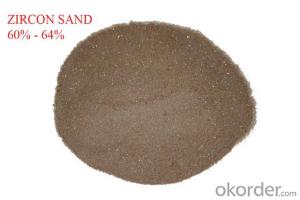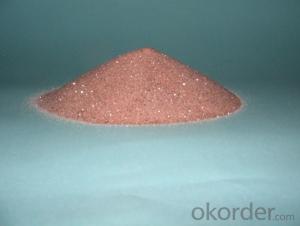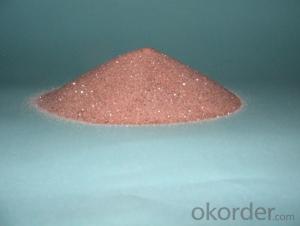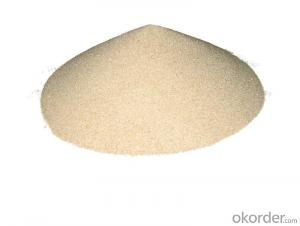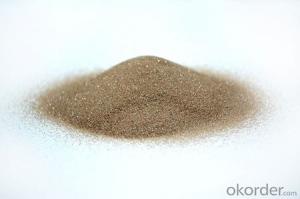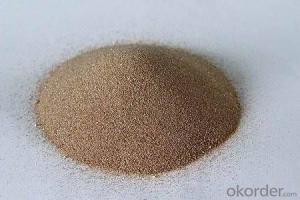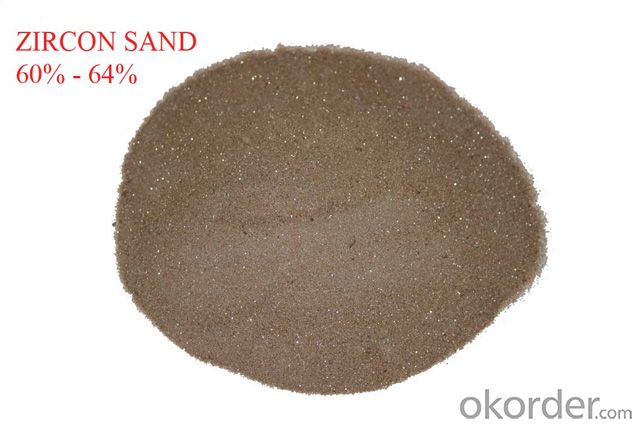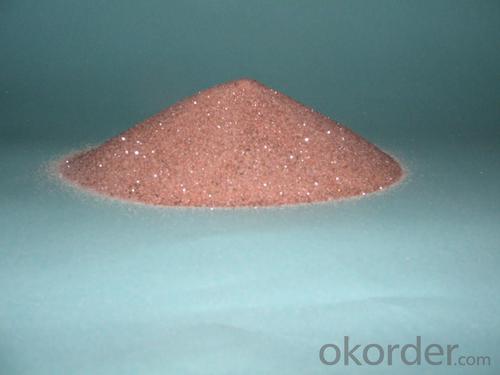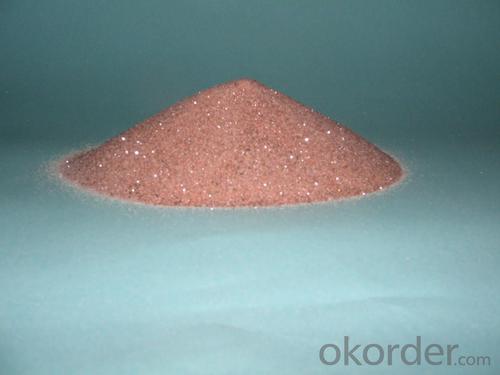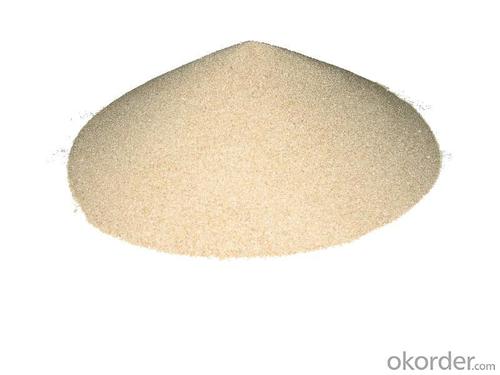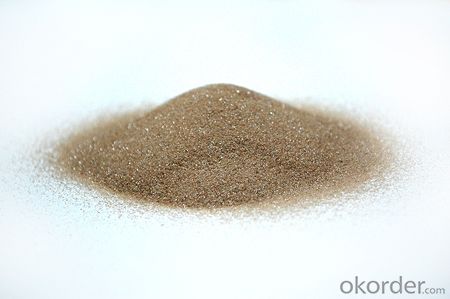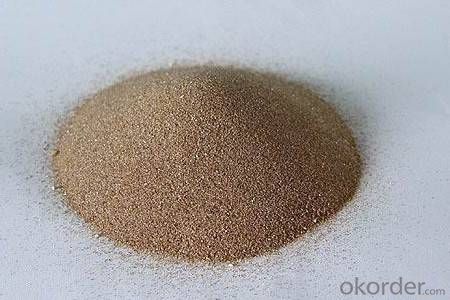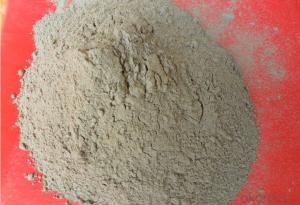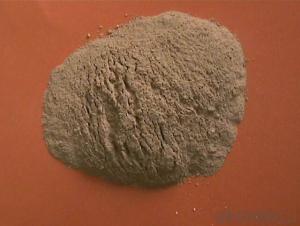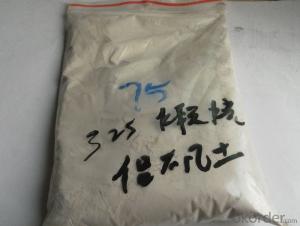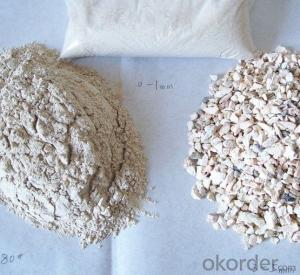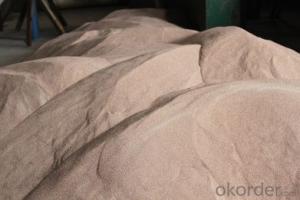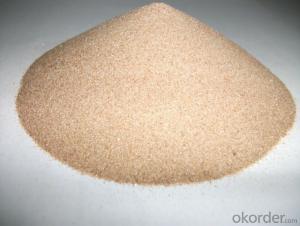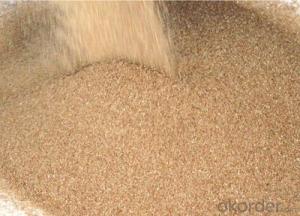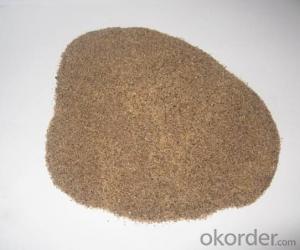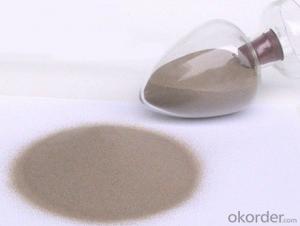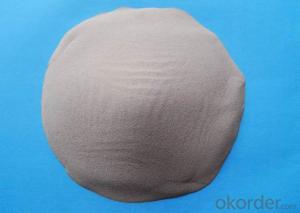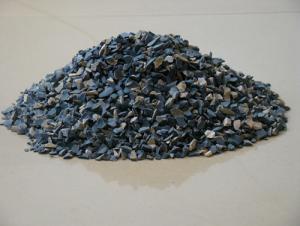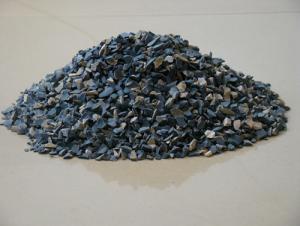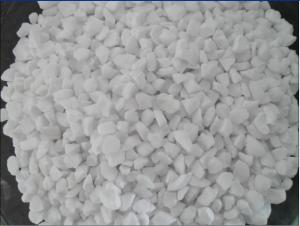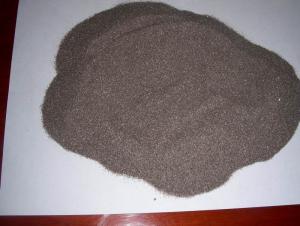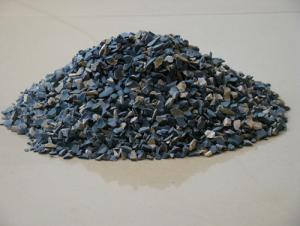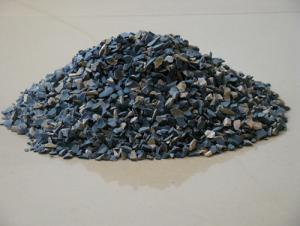Raw Materials for Refractory:Zircon Sand and Zircon Flour High Performance
- Loading Port:
- Tianjin
- Payment Terms:
- TT OR LC
- Min Order Qty:
- 25 m.t.
- Supply Capability:
- 3000 m.t./month
OKorder Service Pledge
OKorder Financial Service
You Might Also Like
Zircon Sand and Zircon Flour High Performafce for Refractory Use
1.Structure of Zircon Sand and Zircon Powder
We are offer zircon sand With Below Mention Descriptions: ZrO2 65 - 67 %. We are offer zircon sand With Below Mention Descriptions: ZrO2 65 - 67 %. Zircon is a remarkable mineral, if only for its almost ubiquitous presence in the crust of Earth. It occurs in igneous rocks as primary crystallization products, in metamorphic rocks and in sedimentary rocks as detrital grains.
Further, the mineral due to hardness, durability and chemical inertness, zircon persists in sedimentary deposits and is a common constituent of most sands.
2.Main Features of Zircon Sand and Zircon Powder
1 Tiny, round, solid ball shape provides greater surface area for improved performance and dispersion in its application
2 High refractory rating, lower specific gravity rating, and higher service temperature produces greater yield
3 With lower bulk density, it offers better air permeability for better performance as a result of its overall physical characteristics
3.Main usage of Zircon Sand and Zircon Powder
1. The 80-120M zircon sand is used in investment casting, the processing is called dipping.
2. It can enhance the shell`s thickness.
3. It is specialize used in inner layer being mixed with silica sol.
4. Zircon Sand and Zircon Powder Images
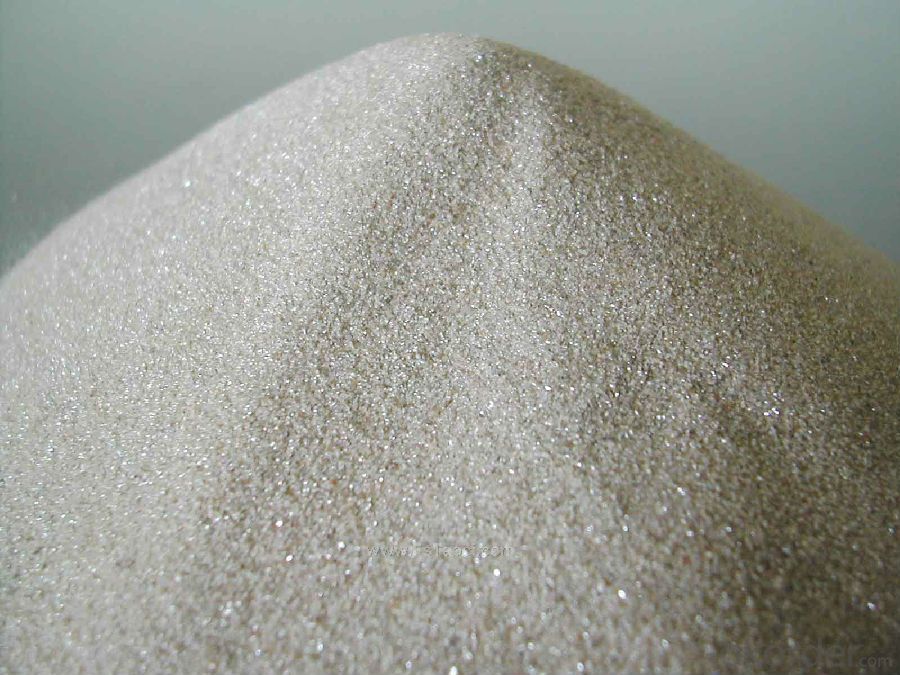
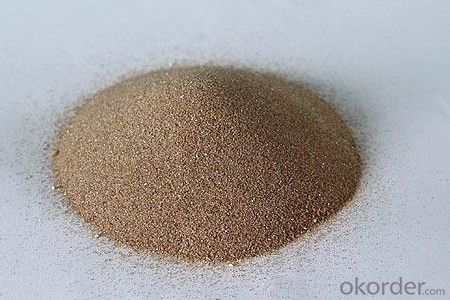
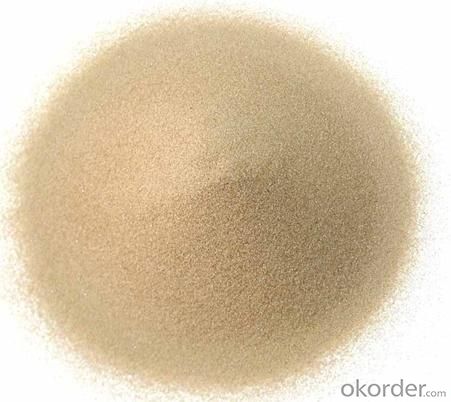
5. Zircon Sand and Zircon Powder Specification
Specific gravity: 4.7
Bulk density: 170-180 lb/ft3; 2700 kg/m3;
Hardness: 7.5 Moh
Angle of repose: 30 degree;
Melting point: 4000°F, 2200°c
Thermal stability: no change to 3090°F, 1700°c
Loss on ignition: 0.02%-0.12%
6.FAQ of Zircon Sand and Zircon Powder
1). Q: Are you a factory or trading company?
A: We are a factory.
2). Q: Where is your factory located? How can I visit there?
A: Our factory is located in China. You are warmly welcomed to visit us!
3). Q: How can I get some samples?
A: Please contact me for samples
- Q: Who knows about the fire endurance of A grade fireproofing glass doors?
- Fire doors and windows are divided into grade A, B and C according to the real national situation, also the minimum fire endurance has been stipulated, namely, the minimum fire endurance of grade A is 1.50 h, that of grade B and C are 1.00 h and 0.50 h respectively. There are wooden fire doors and steel fire doors. The main purpose of it is to reach the time that fire resistance should last. But door?closers are required to install. The fire endurance of A grade wooden fire doors should be no less than 90 min, and that of B grade fire doors should be no less than 60 min, that of C grade fire doors should be no less than 30 min! ! !
- Q: How much modulus is used as refractories material of sodium silicate.
- Storage and use are very convenient, especially for mechanized and the evenly refractory material and the sodium silicatemodulus is generally...2. transportation. The appearance of product is pure white. Instant powdered sodium silicate, also known as instant sodium metasilicate.4 to 3, in powder form, automation. in the range of 3, hydrated sodium silicate
- Q: What's the fireproof specification for constrcution external wall thermal insulation materials?
- Specification for constrcution external wall thermal insulation materials: Article 1 In order to implement the "State Council opinions on strengthening and improving fire prevention work" (state issued [2011] No. 46), to standardize fireproof design and application of external wall thermal insulation materials of newly constructed, renovated, and expanded civil buildings and to prevent and reduce fire of building external wall thermal insulation materials, this provision is made in accordance with relevant national technical standards and our province real situation. Article 2 When there is no cavity between external wall thermal insulation material for exterior wall and base wall and between decorative layers, the insulation system shall comply with the following provisions: (A) Residential buildings: 1. When the building is higher than 54m, combustion performance of the thermal insulation material shall be A level; 2. When the building is not higher than 54m,combustion performance of the thermal insulation material shall be at least B level. When using B1 level insulation materials, non-combustible materials should be used to make the protective layer, and a protective layer thickness of the first floor of the building should be not less than 10mm, the other floors not less than 5mm; incombustible?materials of more than 300mm height should be used to make horizontal fire barrier zone in every floor. (B) Other buildings in addition to residential buildings
- Q: As for fireproofing material rock wool and glass wool, which one is better?
- First of all, glass wool and rock wool fireproof materials, rock wool and glass wool belong to Class A fireproofing rating, secondly, rock wool can endure high temperature of 800 degrees, glass wool high temperature of 450 degrees, again,unit weight of rock wool is relatively heavier and unit weight of glass wool is lighter, finally, glass wool has better waterproof performance.
- Q: which kind of material should be used in fireproofing cabinet?
- Cabinet fireproof?panel can be divided into fiber cement fireproofing board, metal fireproof?panel, mineral wool fireproof?panel, perlite fireproof?panel and many other fireproof?panels. Wherein fiber cement fireproofing board is a new material with growing popularity , it has good thermal insulation and sound insulation performance and belongs to a1 level fireproofing material. Fiber cement fireproofing board is a kind of decoration sheet that takes silicious material or calcareous material as the main raw materials and is made by being combined with fibrous material and other additives in certain proportion. Metal fireproof?panel is a kind of sandwich dalle that takes aluminium plate, stainless steel plate, colorful steel plate and other metal materials as main raw materials and is made by adding some fire?retardant materials. Mineral wool board is a kind of fireproofing decorative board that takes mineral wool and glass wool as the main raw materials. Perlite fireproof panel is a kind of fireproofing hollow plate that take low alkalinity cement as the main materials and fireproofing perlite as filler.
- Q: What is the material composition of the new fire-resistant coating?
- New fire?retardant?coating materials are produced by non-toxic expanding materials and special process, with no pollution. Use natural bite when installing, without using the formaldehyde and other toxic glue. It consists of a variety of organic matters, so it adapts to the natural environment, with long time of fire-resistant; The fire-resistant time for new fire retardant module is up to 4 hours or more, three hours more than the standard prescribed by the state. It is composed by the specially formulated materials, with no flying smoke, good heat insulation effect, fast heat dissipation, scientific and rational design, easy using and no falling off and long period of effective.
- Q: What substitutes are available for high-end refractories in addition to zircon sand?
- If you want to use environmentally friendly products, please use recycled Mo powder.
- Q: What's the A grade fireproofing material?
- Main materials are steel, wood, steel and wood. Fire door is one of the measures for buildings fire separation, and it is generally installed at the firewalls, entrances and exits of stairwells or tube well openings, which is required to play the role of fire protection and smoke control. Fire door plays an important role in preventing the spread of smoke and fire and reducing damages, so it must be strictly required. Fire dooor is classified into three classes of A, B, C, and their fire insulation and fire integrity is greater than or equal to the following values: A class fire door: 1.5h; B class fire door: 1.0h; C class fire door: 0.5h. It is in accordance with the provisions of 4.5.1.2 Article in GB12955-2008 "New Standard of Fire Doors".
- Q: What kind of refractory material should be used for common boiler?
- Build by using clay refractory mortar. Common clay brick is used as combustion layer. Xindeyuan Refractory Material, red?brick is used as external wall. Light clay brick is used as thermal insulation layer, thank you.
Send your message to us
Raw Materials for Refractory:Zircon Sand and Zircon Flour High Performance
- Loading Port:
- Tianjin
- Payment Terms:
- TT OR LC
- Min Order Qty:
- 25 m.t.
- Supply Capability:
- 3000 m.t./month
OKorder Service Pledge
OKorder Financial Service
Similar products
Hot products
Hot Searches
Related keywords
